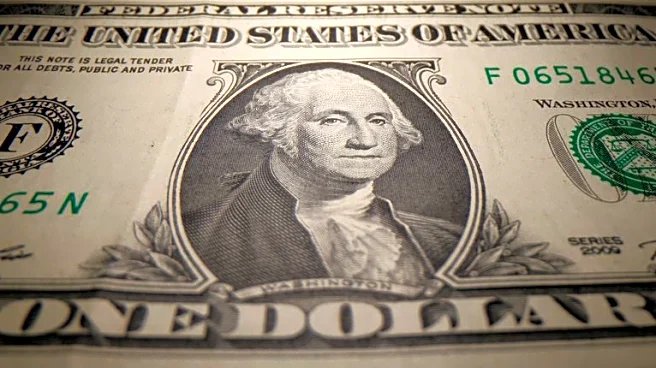What's Happening?
The U.S. dollar has slightly retreated from its recent multi-month highs as a renewed appetite for riskier assets has emerged. This shift comes ahead of a Bank of England meeting, where a dovish tone is anticipated.
The dollar's position against the euro remains relatively stable, while the Australian and New Zealand dollars have seen gains, driven by a rebound in stock markets. Despite a rise in U.S. yields following positive labor data and potential increases in debt sales, the market's focus has shifted towards risk-sensitive currencies. The dollar's performance is currently supported by higher U.S. government bond yields, maintaining its strength against currencies like the yen.
Why It's Important?
The dollar's movement is a critical indicator of global economic sentiment and can significantly impact international trade and investment. A stronger dollar generally benefits U.S. importers but can pose challenges for exporters by making American goods more expensive abroad. The anticipation of a dovish stance from the Bank of England could influence currency markets, affecting trade balances and economic policies. The current environment underscores the interconnectedness of global financial markets, where shifts in risk appetite can lead to rapid changes in currency valuations.
What's Next?
Investors and policymakers will be closely watching the outcomes of the Bank of England meeting and any subsequent statements that could influence market dynamics. The ongoing U.S. government shutdown, which has halted data publication, adds uncertainty to economic forecasting. As markets adjust to these developments, further fluctuations in currency values are expected, with potential implications for international trade and economic stability.












